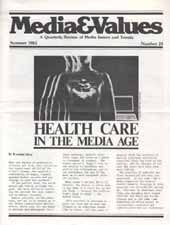Beyond Book Burning
|
This article originally appeared in Issue# 24
|
The censorship of the classics — from Shakespeare to the Grapes of Wrath — is an old story, but it is happening again. According to a recent survey of school librarians, 34 percent have had challenges on specific works, with many parents or individuals lodging complaints, often fanned by the flames of moral outrage stirred up by national interest groups.
Book burning rallies are the extreme, but recent crusaders have pressed for the elimination of such acclaimed books as Huckleberry Finn, One Flew Over the Cuckoo's Nest and 1984. In some cases, teachers or librarians are threatened with firing or prosecution if they recommend books that are controversial.
But in this year — the 50th anniversary of the famous Nazi bonfires of 1933 — the issue is larger than book burning.
It is the dawn of the computer age, and the question of who decides what information is printed has broadened. "Printing" is no longer restricted to just the individually printed words in books, magazines and newspapers. It now applies to the information on CRT's and computer printouts as well.
Experts are talking about computer access to the whole realm of human knowledge, roving through complete libraries at the touch of a button. But we still have to consider what gets into the libraries.
For 500 years, 'the whole realm of human knowledge" has meant whatever the people who controlled the presses allowed to be printed. Galileo found that this created problems. But because he was published, he reached beyond the audience that censored him. So did Spinoza — and Solzhenitsyn.
In the foreseeable future, knowledge will consist of what someone can put into a computer network. And the controls for that haven't even been invented yet.
We're no longer talking about Savonarola's squads of book burners, or Goebbel's, but George Orwell's thought control machines.
Unfortunately, the folks who believe that freedom exists only for those who agree with them are beginning to learn that it's easier to censor something before it gets printed, videotaped or entered into the computer.
The question is insidious, because ideological pre-censorship is hard to distinguish from the censorship of the marketplace, which is always with us.
In fact, one of the most frightening aspects of modern book-burning is its creation of a climate that makes publishers, editors, TV and cable managers extra cautious about the material they buy, print and produce. New ideas and minority opinions have enough trouble "selling" themselves, In a climate of censorship, they're likely to die of blacklisting.
The real image of modern censorship is not the bonfire, even though those fires must be put out. It's the recent registration of typewriters by the Romanian government and the recording of their individualized patterns. It's the labeling of documentary films as "propaganda" when they present a point of view contrary to a current government policy.
Fortunately, the human instinct for self expression is a natural counterweight to the force of censorship. A symbol is the samizdat, the self-published hand-typed manuscripts that circulate in the Soviet Union… the "tell-a-nun" network in the Philippines, where Catholic sisters hand-distribute mimeographed copies of their bishop's pastoral letters on justice because the Marcos regime controls all the media outlets.. the graffiti newspapers that flourish on the walls of dictatorships from China to Chile.
In the U.S., the First Amendment protects the free exchange of ideas. The Gospel also reminds us that truth is the only way to life for the human family. The climate of censorship, no matter how or when it is manifested, must be countered by concerned people everywhere.



